The Acer is also known as the Japanese Maple, and is a stunning deciduous tree.
They come in an amazing variety of colours – red, green, yellow, purple and orange.
There are also different varieties of form, with weeping, dwarf and full size trees to choose from.
They need the correct conditions to thrive however, and can sometimes struggle and experience leaf drop.
So if you have asked the question “Why Is My Acer Losing It’s Leaves?” then read on for answers and solutions.
2. Sun and Wind Exposure
3. Frost Exposure
4. Root Bound In A Pot
5. Too Much Or Too Little Water
6. Soil With Poor Drainage
7. Fungus: Phytophthora Root Rot or Verticillium Wilt
Deciduous Autumn Leaf Drop
The Acer tree and all Maples are deciduous, so there will be natural leaf drop in autumn.
This is nothing to worry about, and there should be an even more colourful display through autumn before the leaves do fall.
How to fix:
- As this is the natural rhythm of the plant, there is no issue to fix as long as the plant looks healthy.
- If you were hoping to brighten up a bare area however, then there is good news as there are Acers that provide colour interest through the winter even when the leaves have fallen.
- Acer x conspicuum ‘Phoenix’ has bright pink stems while Acer palmatum ‘Winter Flame’ has red or coral coloured branches.
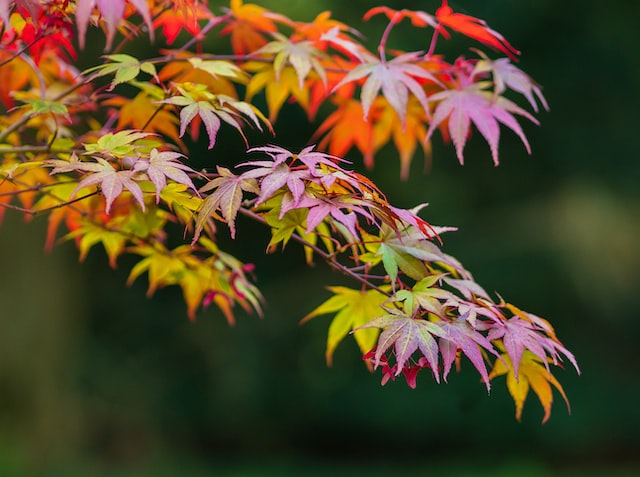
Sun and Wind Exposure
These can be very common causes of leaf drop in Acers.
The leaves are quite delicate and a harsh wind can easily damage the stems and leaf tissue as they get whipped about.
The sun can scorch the fragile leaf tips and cause leaf burn.
Acers with darker foliage colours (red to purple) can handle a bit more sun than the pale green and yellow varieties.
Both the wind and sun can also increase the moisture loss from the leaves and cause them to dry out and break.
How to fix:
- Acers like to be in a sheltered position, out of the wind and ideally in dappled shade.
- This will offer them protection from physical damage and excessive moisture loss from the leaves.
- If you have an existing Acer in an exposed position, try to erect a windbreak or sunshade of some sort.
- This could be another tree or shrub, a shed, or even just a temporary tarp during windy or very sunny conditions.
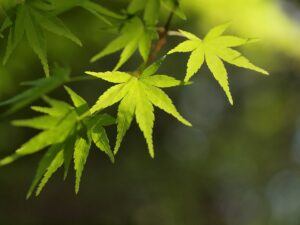
Frost Exposure
Another common occurrence is frost damage which can turn the leaves black.
This can happen in the spring if an unexpected frost happens when new leaves are forming.
The frost can also damage new stem tips, and it can look as if the Acer is dying
How to fix:
- Don’t give up, Acers will likely recover in the summer and new buds will form.
- Try to keep the leaves dry so excessive ice does not form on the leaves if a frost does occur.
- If you have heavy snow, knock as much off the Acer as possible as the weight of sitting snow can break the slim branches.
- You can cover young or particularly delicate Acers in fleece or burlap if a spring frost is forecast when leaves have already started to form.
- Remember to remove the fleece or sacking after the threat of frost has passed, as coverings left on too long can increase moisture build up next to the plant and encourage fungus growth.
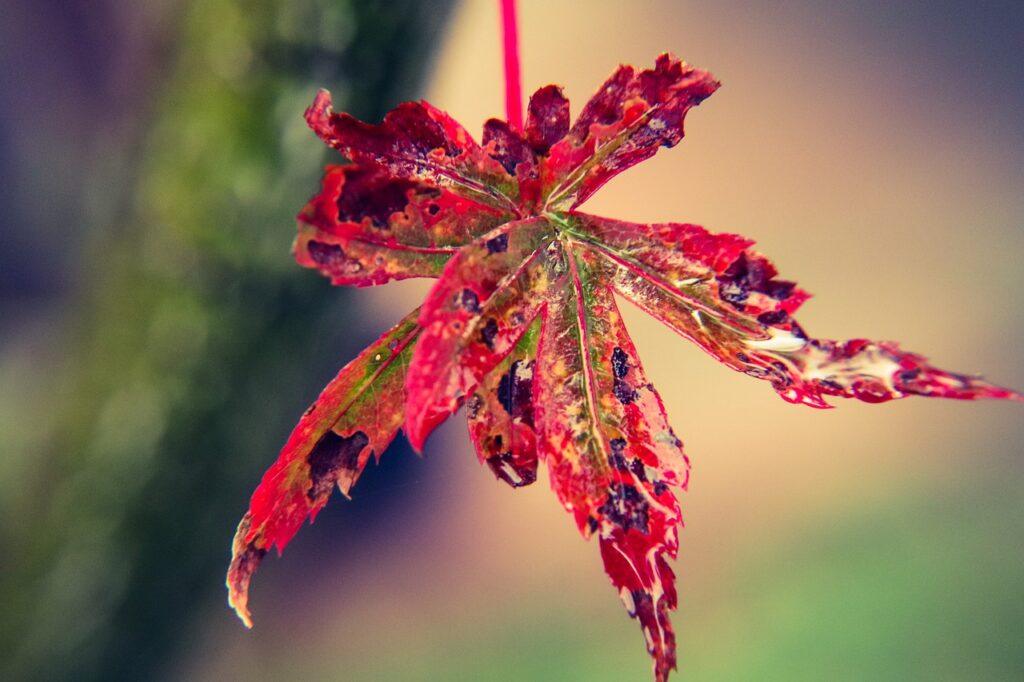
Root Bound In A Pot
Acers do quite well in pots as they are slow growing.
The smaller varieties in particular are well suited to container gardening.
They do require monitoring however as eventually their roots will become too large and a bigger pot will be necessary.
Signs of this can be the plant looking too large for the container as well as devitalised and straggly.
Check to see if the roots reach the very bottom and sides of the pot, or if they are winding around the outside.
If so it is time to pot up or plant in the ground.
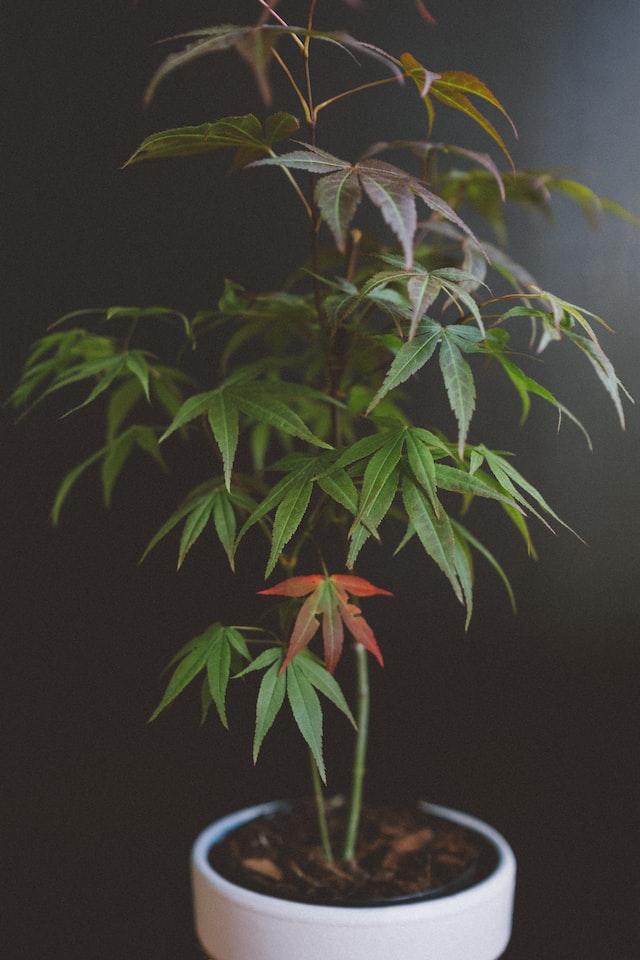
How to fix:
- Choose a straight edged pot rather than a rounded bulbous one as these are easier to remove if the roots have expanded.
- The new pot should not be significantly bigger as this can encourage too much water retention, just the next size up will be fine.
- Make sure the new pot has good drainage.
- Put a crock (some broken pot) at the bottom over the drainage holes to stop the hole from clogging up with soil.
- Acers prefer neutral to slightly acidic soil so a good choice is a peat-free ericaceous potting compost.
- Once potted, water in well and raise the pot on legs or bricks to aid drainage.
- Remember to monitor your pot regularly. The soil should be moist but not wet.
- Consider planting your Acer in the ground, provided it is in a sheltered spot in well draining soil it should do well.
Too Much Or Too Little Water
As covered above, Acers like optimum soil conditions that are moist but not wet.
Severe drought will cause the Acer to drop it’s leaves, as it seeks to retain what water it can.
Overly wet conditions will have the same effect as roots become compromised, stopping them from functioning.
This will cause the roots to rot and ironically, prevent them from drawing up water.
This will bring about a stress response and again the Acer will leaf drop to preserve the moisture it has.
How to fix:
- Do not overwater but do not underwater either.
- Check the soil with your fingers, it should be moist about 5cm down, but not wet.
- Monitor regularly and keep a watering diary to remind yourself when you last watered.
- This is especially important if the Acer is in a pot, or in a location that receives minimal natural rainfall.
Soil With Poor Drainage
Like most plants, apart from bog plants, Acers do not like water saturated soil.
Overwatering can cause this problem also, but a well draining soil will help to move the water away from the roots.
Sitting in wet soil for too long can cause issues with the roots and can encourage fungi to develop, which we will cover in the next section.
How to fix:
- If your soil is heavy and prone to waterlogging, work in some grit, sand or stones to increase drainage.
- Make sure surface water run-off is not accumulating around the Acer, this can happen at the bottom of slopes or natural dips in the ground.
- If this is happening, try to create some channels using soil or stones to redirect the flow away.
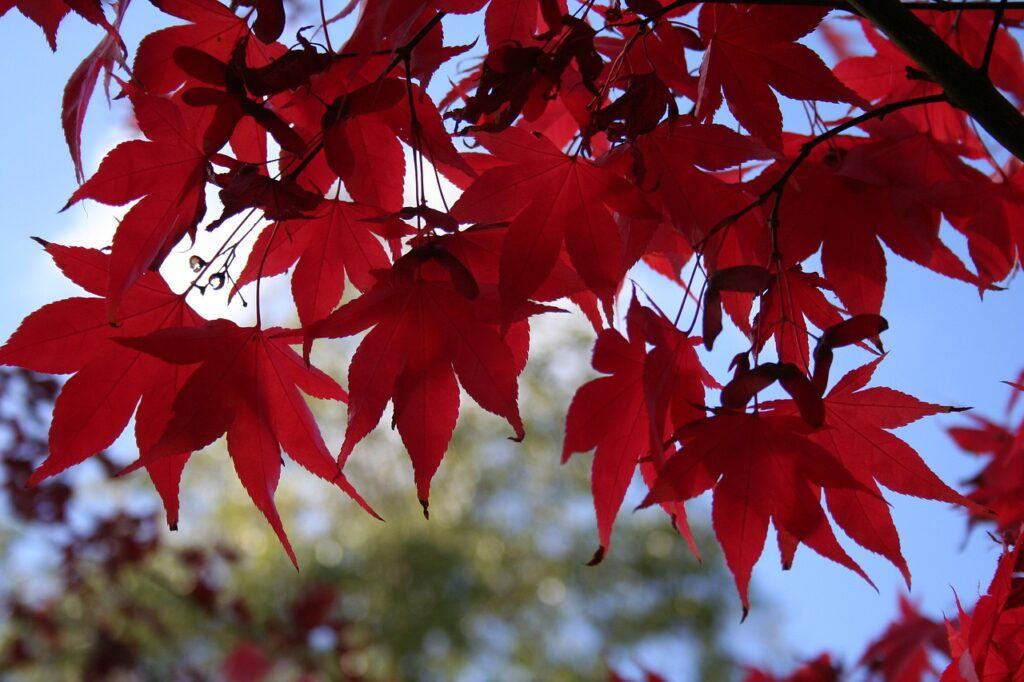
Fungus: Phytophthora Root Rot
This fungus can develop when the conditions around the Acer become wetter than normal for a sustained amount of time.
Phytophthora Root Rot is caused by spores that travel underground through the water.
The roots begin to decompose, and a dark band can appear around the base of the trunk.
Eventually the branches and foliage begin to fail, looking devitalised and drooping.
Unfortunately by this stage it is often too late to save the plant, but if caught earlier before the roots decompose then action can be taken to rectify the situation.
How to fix:
- If identified early enough and if a reasonable amount of the roots are still solid and white you can quickly dig up the tree and thoroughly rinse the roots in fresh water.
- Any rotten root matter and the surrounding soil should be removed and disposed of (not in the compost heap).
- Clean and sterilise any tools used.
- Replant the Acer tree in a different location in the garden with better drainage and drier soils.
- Monitor to make sure it recovers.
- Prevention is better than a cure, so do not overwater susceptible plants in the garden and maintain good ventilation around the stem by regularly clearing debris.
Fungus: Verticillium Wilt
This fungus also travels through the soil and can affect numerous different plants, including fruit and vegetables.
Unfortunately, Acers are particularly susceptible.
Verticillium Wilt is most active following warm spring temperatures.
It travels through the vascular system of the plant and prevents the circulation of sap and water.
Affected plants start to wilt, sometimes just one section, with lower leaves becoming discoloured to yellow and brown.
Leaves then fall, buds can fail, and branches can die back.
Affected branches can show brown or black streaks under the bark.
A cross section of branch may show dark circles.
How to fix:
- Unfortunately once this fungus has begun to damage the plant it can be very difficult to treat.
- If the fungus has only affected a very small section of an established Acer and the rest is unaffected, then you can try just pruning the damaged branches to the point that they are healthy.
- This will likely just postpone the decline however as it is impossible to eradicate completely.
- In smaller trees that are more heavily infected, it is best just to remove the tree and either burn it or dispose of it safely.
- Make sure to sterilise all tools used.
- When replanting the area, choose trees that are resistant to Verticillium Wilt, such as Conifers.
- Make sure the soil is well draining, work in some sand, stones and grit if needed.
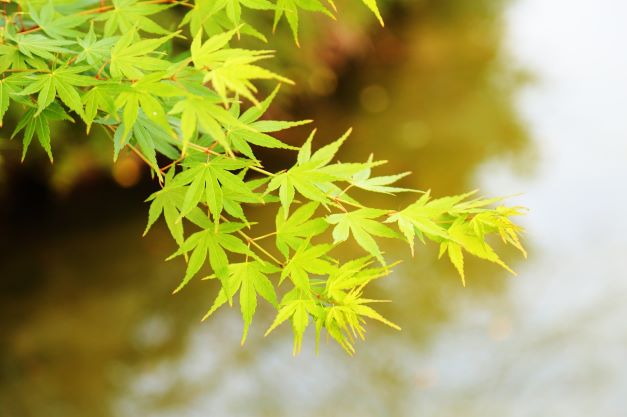
Final Thoughts
Acers have to be some of the most beautiful ornamental trees available.
Due to their variety, it is possible to fit one into almost any garden design.
They can be fragile however and do need a little extra care and attention.
If you are having any issues with your Acer that I have not covered above, then send me a message and I will do my best to help.


Hi. I have a large acer which was my dad’s he died in 2019 I brought it to London from Yorkshire , this has just started to drop a few leaves at this time of year iv never known this ? I would be so sad if it died what can i do iv never repotted it im scared to repott it.
Thank you.
Hi Carol,
Thanks for your query. If your Acer is in a pot it could be that it has grown to the point that it would prefer to be in the ground. Plants or trees in pots tend to be at more risk of freezing over the winter, as a hard frost can freeze pot contents, especially small ones, whereas plants in the ground will have protection from that – the ground will never fully freeze. Acers are trees and although they will be fine in a pot for a time, plants in pots do need more careful monitoring (drainage/too much water/too little water) and Acers being slightly fussy can suffer more than other hardier plants. Do you have a garden or a place you could plant it in the ground? That’s what I would recommend to be honest. Chose a spot with dappled shade and sheltered from wind and it should be happy.
I hope this helps you.
All the best,
Sue at My Garden Heaven.